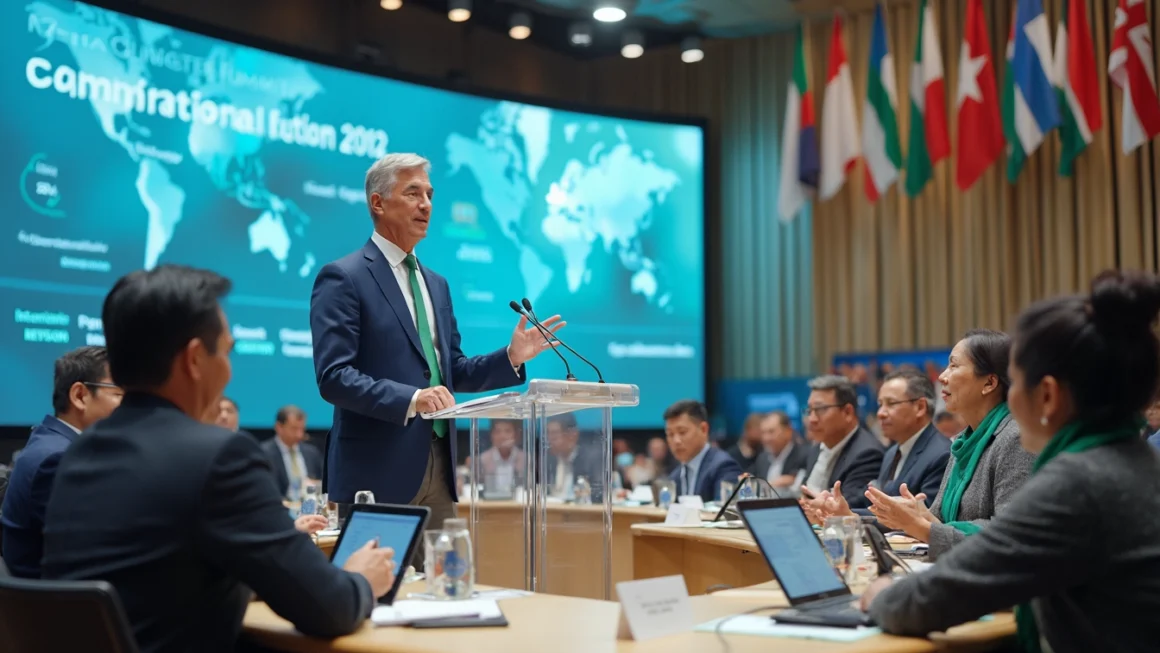The Critical Role of Finance in Climate Action
Table of Contents
As world leaders gather for the UN Climate Summit, the spotlight is firmly on finance as a key driver for meeting global emissions targets. Despite recent progress, the international community faces significant challenges in mobilizing the necessary funds to combat climate change effectively.
Current State of Climate Finance
Recent reports indicate that the world is making strides towards reducing greenhouse gas emissions. However, the pace of change is not yet sufficient to meet the ambitious targets set by the Paris Agreement. The gap between current efforts and required action underscores the urgent need for increased financial commitment from both public and private sectors.
Experts estimate that annual investments of $4-6 trillion are necessary to achieve net-zero emissions by 2050. While this figure may seem daunting, it represents a fraction of global GDP and is crucial for safeguarding our planet’s future.
The Role of Developed Nations
Developed countries have a pivotal role to play in climate finance. The longstanding pledge to provide $100 billion annually to developing nations for climate action remains unfulfilled. This commitment is not just a matter of financial support; it’s about building trust and fostering global cooperation in the fight against climate change.
Increasing financial flows from developed to developing countries is essential for several reasons:
- It helps vulnerable nations adapt to climate impacts
- It supports the transition to clean energy in emerging economies
- It demonstrates solidarity in a shared global challenge
Innovative Financing Mechanisms
To bridge the climate finance gap, innovative solutions are being explored. These include:
- Green bonds and climate bonds
- Carbon pricing mechanisms
- Blended finance approaches
- Debt-for-climate swaps
These instruments can help mobilize private capital and align financial flows with climate goals. For instance, automation tools can streamline the process of tracking and reporting on climate investments, making it easier for organizations to participate in these new financial mechanisms.
The Private Sector’s Crucial Contribution
While government action is essential, the private sector plays an equally critical role in climate finance. Businesses and investors are increasingly recognizing the risks posed by climate change and the opportunities presented by the transition to a low-carbon economy.
Key areas for private sector involvement include:
- Renewable energy investments
- Sustainable infrastructure development
- Clean technology innovation
- Sustainable agriculture and forestry
By aligning their strategies with climate goals, companies can not only contribute to global efforts but also position themselves for long-term success in a changing world.
Challenges and Opportunities
Despite the urgency, several challenges hinder the scaling up of climate finance:
- Policy uncertainty in some regions
- Lack of standardized reporting and measurement frameworks
- Limited capacity in developing countries to absorb and deploy funds effectively
- Short-term thinking in financial markets
Addressing these challenges presents opportunities for innovation and collaboration. Governments, international organizations, and the private sector must work together to create enabling environments for climate finance to flourish.
The Way Forward
As the UN Climate Summit progresses, several key actions are crucial for advancing climate finance:
- Developed nations must fulfill and exceed their $100 billion commitment
- Strengthen public-private partnerships to leverage resources and expertise
- Enhance transparency and accountability in climate finance flows
- Develop capacity in recipient countries to effectively utilize climate funds
- Accelerate the shift of financial flows away from fossil fuels and towards clean energy
Conclusion: A Call to Action
The UN Climate Summit serves as a critical juncture for global climate action. While the challenges are significant, the opportunities for creating a sustainable, resilient future are even greater. By prioritizing climate finance and fostering collaboration across sectors and borders, we can accelerate the transition to a low-carbon economy and safeguard our planet for future generations.
The time for action is now. Every investment in climate solutions, every policy supporting sustainable development, and every individual choice towards a greener lifestyle contributes to this global effort. As we stand at this pivotal moment, let us embrace the challenge and opportunity of climate finance to create a more sustainable and equitable world for all.




